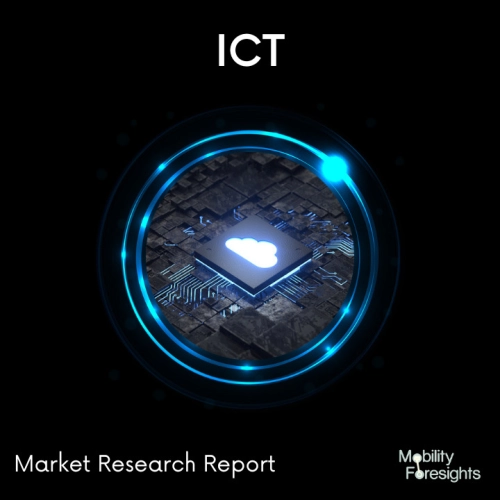
- Get in Touch with Us

Last Updated: Apr 25, 2025 | Study Period: 2023-2030
A quantum computer is a revolutionary type of computer, which can solve certain computational problems exponentially faster than any other classical computer. A quantum computer functions by using qubits instead of traditional binary bits.
Unlike binary bits, qubits can represent more than one state simultaneouslyâmeaning they can be both 1 and 0 at the same time. This enables them to process large amounts of data in parallel, enabling substantially faster computing powers.
An important advancement in quantum computing technology is the introduction of portable systems. Portable quantum computers contain all the components required to run entire computations, including a qubit processor and associated control hardware for manipulating qubits, as well as readouts for measuring outcomes and programs for coordinating operations.
These computers are comparatively small compared to classical computers engaging in storage requirements that are typically larger than those found in conventional PCs or laptopsâtypically between 2 - 4GBs and ranging up to 256GBs of RAM per core systemâwhich allows them to function without an internet connection.
Their portability also makes them far easier to transport and deploy in various locations such as research institutions or remote areas with limited access to power sources or internet connections not capable of sustaining classical computation tasks.
Overall, portable quantum computers are a pivotal step forward in the emergence of quantum computing technology.
They function by leveraging qubits instead of traditional binary bits to perform complex computations with greater efficiency and speed. Portable systems also offer flexible usage options due to their small size, easy transportability and reduced power requirements, seemingly making them the ideal solution for a variety of applications.

The Global Portable quantum computer market accounted for $XX Billion in 2022 and is anticipated to reach $XX Billion by 2030, registering a CAGR of XX% from 2023 to 2030.
| S No | Company Name | Development |
|---|---|---|
| 1 | SpinQ Technology | A trio of portable quantum computers designed for educational users have been introduced by SpinQ Technology. The models cater only to those who want to learn how to programme and operate quantum circuits; they only provide two- and three-qubit processors. The Gemini, Gemini Mini, and Triangulum models are the first to be released for retail sales. They can only handle basic qubit technology because they are much smaller and less powerful than modern quantum computers. |
| S NO | Overview of Development | Development Detailing |
| 2 | The outcome of VTT and IQM Quantum Computers' intensive collaborative technology development is the quantum computer, showcasing the companies' superiority in creating technologies to scale up quantum computers. | Finland is one of the nations investing in quantum computing due to the development of the new 20-qubit quantum computer. It has already made significant technological development progress towards scaling up the now completed 20-qubit quantum computer to 50 qubits. The development of the 20-qubit quantum computer by VTT and IQM has resulted in technological advancements that enable scaling quantum computers and increasing their qubit count and processing power. |
| 3 | Japan's second quantum computer was successfully developed, according to Fujitsu and research institute Riken . This development is a result of global research efforts to bring the emerging technology to a practical level. | A 40 qubit quantum computer simulator will be integrated with the 64 qubit quantum computer from state-backed Riken and Fujitsu as researchers attempt to remove the errors that keep these systems from producing reliable results. A unit of measurement used to quantify the power of quantum computersâwhich make use of quantum mechanicsâis called a qubit. |
| Sl no | Topic |
| 1 | Market Segmentation |
| 2 | Scope of the report |
| 3 | Abbreviations |
| 4 | Research Methodology |
| 5 | Executive Summary |
| 6 | Introduction |
| 7 | Insights from Industry stakeholders |
| 8 | Cost breakdown of Product by sub-components and average profit margin |
| 9 | Disruptive innovation in the Industry |
| 10 | Technology trends in the Industry |
| 11 | Consumer trends in the industry |
| 12 | Recent Production Milestones |
| 13 | Component Manufacturing in US, EU and China |
| 14 | COVID-19 impact on overall market |
| 15 | COVID-19 impact on Production of components |
| 16 | COVID-19 impact on Point of sale |
| 17 | Market Segmentation, Dynamics and Forecast by Geography, 2023-2030 |
| 18 | Market Segmentation, Dynamics and Forecast by Product Type, 2023-2030 |
| 19 | Market Segmentation, Dynamics and Forecast by Application, 2023-2030 |
| 20 | Market Segmentation, Dynamics and Forecast by End use, 2023-2030 |
| 21 | Product installation rate by OEM, 2023 |
| 22 | Incline/Decline in Average B-2-B selling price in past 5 years |
| 23 | Competition from substitute products |
| 24 | Gross margin and average profitability of suppliers |
| 25 | New product development in past 12 months |
| 26 | M&A in past 12 months |
| 27 | Growth strategy of leading players |
| 28 | Market share of vendors, 2023 |
| 29 | Company Profiles |
| 30 | Unmet needs and opportunity for new suppliers |
| 31 | Conclusion |
| 32 | Appendix |